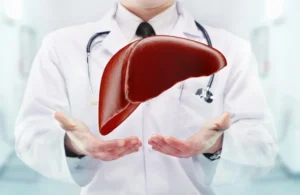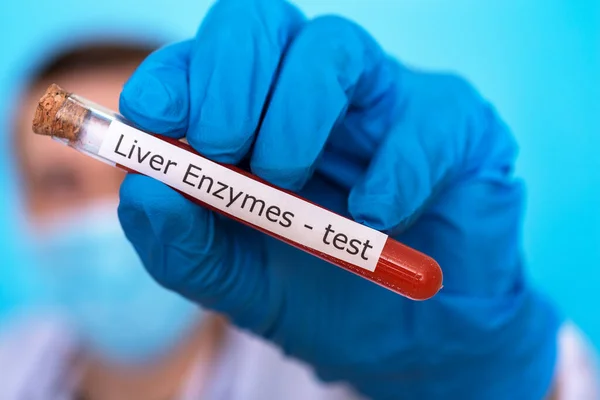The liver is a vital organ that manages numerous metabolic processes within the body. Among the crucial tests to monitor liver health, the Serum Glutamic Oxaloacetic Transaminase (SGOT) and Serum Glutamate Pyruvate Transaminase (SGPT) stand out. These tests are essential in assessing the danger level of SGPT and SGOT and understanding their impact on overall health.
SGOT and SGPT are enzymes found within the liver cells and play a pivotal role in metabolizing amino acids. The health of your liver can significantly influence these enzyme levels. Monitoring SGOT and SGPT is crucial because any elevation beyond the normal range could indicate liver damage or disease.
Table of Contents
Toggle- Normal and Danger Level of SGPT and SGOT
- Symptoms of Elevated SGPT and SGOT Levels
- Causes of Elevated SGPT and SGOT Levels
- Management and Prevention Strategies for High SGPT and SGOT Levels
- Testing and Diagnosis for Elevated SGPT and SGOT
- Lifestyle Recommendations for Maintaining Healthy SGPT and SGOT Levels
- Conclusion: Importance of Monitoring SGPT and SGOT Levels
Normal and Danger Level of SGPT and SGOT

Understanding the normal and danger level of SGPT and SGOT is crucial for early detection and management of liver issues. Here are the generally accepted ranges:
- Normal Range:
- SGPT (ALT): 7 to 56 units per liter of serum.
- SGOT (AST): 8 to 45 units per liter of serum.
- Danger Levels:
- Mild Elevation: Indicates possible minor liver stress or early signs of liver damage. Often seen with conditions like fatty liver or as a result of medication side effects.
- Moderate Elevation: Suggests more significant liver damage and may warrant further diagnostic testing for diseases like hepatitis or cirrhosis.
- Severe Elevation: Indicates acute liver damage or liver failure and requires immediate medical intervention.
These levels are benchmarks for healthcare professionals to identify potential health issues and to decide on the urgency of treatment needed to mitigate liver damage.
Symptoms of Elevated SGPT and SGOT Levels
Elevated levels of SGPT and SGOT often do not manifest any symptoms until the condition is advanced, making it crucial to understand potential signs associated with liver damage. Awareness of these symptoms can prompt early testing and intervention, possibly preventing severe liver complications.
- Common Symptoms:
- Fatigue and general weakness.
- Abdominal discomfort or swelling.
- Nausea and vomiting.
- Appetite loss.
- Severe Symptoms:
- Jaundice (yellowing of the skin and eyes).
- Dark urine and clay-colored stools.
- Excessive bruising or bleeding.
- Swelling in the legs and ankles.
These symptoms, particularly when combined, can indicate that the danger level of SGPT and SGOT has been reached or exceeded, signaling significant liver distress or failure.
Causes of Elevated SGPT and SGOT Levels

The causes of elevated danger level of SGPT and SGOT are diverse, ranging from lifestyle factors to more serious liver diseases. For management and treatment to be effective, the root cause must be found.
- Lifestyle Factors:
- High alcohol consumption.
- Obesity and poor dietary habits.
- Lack of physical activity.
- Medical Conditions:
- Hepatitis (A, B, C, and other types).
- Liver cirrhosis.
- Heart attacks or heart failure impacting liver blood flow.
- Other diseases like celiac disease and diabetes.
- Medication and Toxins:
- Overuse of certain medications like acetaminophen.
- Exposure to toxins and industrial chemicals.
Each of these factors can contribute to liver stress or damage, reflected in elevated levels of liver enzymes. It’s crucial to address these underlying issues to lower the danger level of SGPT and SGOT and maintain liver health.
Management and Prevention Strategies for High SGPT and SGOT Levels
Effectively managing and preventing high danger level of SGPT and SGOT involves a combination of lifestyle modifications, dietary changes, and medical interventions. Here are key strategies to help reduce elevated enzyme levels and maintain liver health:
Lifestyle Changes:
- Reduce Alcohol Intake: Minimizing or eliminating alcohol consumption can significantly lower liver enzyme levels.
- Quit Smoking: Smoking cessation is crucial as it helps reduce liver inflammation and improve overall liver function.
- Regular Exercise: Engaging in regular physical activity helps manage weight, reduce fat accumulation in the liver, and improve metabolic health.
Dietary Adjustments:
- Healthy Eating: Incorporate a diet rich in fruits, vegetables, whole grains, and lean proteins to support liver health.
- Limit Fatty Foods: Reducing intake of saturated fats and processed foods helps prevent fatty liver disease.
- Stay Hydrated: Drinking plenty of water facilitates the liver’s detoxification processes.
Medical Management:
- Routine Check-ups: Regular monitoring of liver function tests can detect early signs of liver distress, allowing for timely intervention.
- Medication Review: Discuss with healthcare providers to adjust or change medications that might be causing elevated liver enzymes.
- Vaccinations: Stay updated with vaccinations, especially for hepatitis A and B, to prevent liver infections.
Implementing these measures can not only help in managing the danger level of SGPT and SGOT but also enhance overall health and well-being.
Testing and Diagnosis for Elevated SGPT and SGOT

Regular testing and accurate diagnosis are crucial for managing and understanding the danger level of SGPT and SGOT. Here are the common procedures and tests used to assess liver enzyme levels:
Key Tests:
- Blood Tests: Routine blood tests to measure SGPT and SGOT levels are the first step in diagnosing liver issues.
- Liver Function Test: A comprehensive test that checks for a range of liver enzymes, including SGPT and SGOT, to evaluate liver health.
- Imaging Tests: Ultrasound, CT scans, and MRI can help visualize the liver and detect structural changes.
Diagnostic Procedures:
- Physical Examination: Includes checking for signs of liver disease such as jaundice and liver enlargement.
- Medical History: Discussing symptoms, alcohol consumption, medication use, and family history of liver disease.
- Follow-Up Tests: Depending on initial results, additional tests like a biopsy may be necessary.
Through these diagnostic tools, healthcare providers can determine the severity of liver damage and the appropriate steps to manage the danger level of SGPT and SGOT, ensuring targeted and effective treatment.
Lifestyle Recommendations for Maintaining Healthy SGPT and SGOT Levels
To prevent reaching the danger level of SGPT and SGOT, it’s essential to adopt lifestyle habits that support liver health and overall well-being. Here are some actionable recommendations:
Nutrition:
- Balanced Diet: Consume a variety of foods from all food groups, particularly those rich in fiber and antioxidants.
- Limit Sugar and Salt: Reduce intake of high-sugar and high-salt foods to prevent liver and kidney strain.
- Incorporate Healthy Fats: Include sources of omega-3 fatty acids such as fish, nuts, and seeds.
Physical Activity:
- Regular Exercise: Aim for at least 150 minutes of moderate aerobic activity or 75 minutes of vigorous activity each week.
- Strength Training: Include muscle-strengthening activities on two or more days a week.
Mental Well-being:
- Stress Management: Engage in activities that reduce stress, such as yoga, meditation, or deep breathing exercises.
- Adequate Sleep: Ensure 7-9 hours of quality sleep per night to help the body repair and regenerate.
By following these guidelines, individuals can significantly lower their risk of elevating their danger level of SGPT and SGOT, thereby maintaining a healthy liver and enhancing overall health.
Conclusion: Importance of Monitoring SGPT and SGOT Levels
Monitoring the danger level of SGPT and SGOT is crucial for early detection and prevention of liver diseases. Regular liver function tests not only help in assessing the current state of liver health but also aid in detecting any early signs of potential liver damage or dysfunction. Awareness and proactive management can significantly improve the prognosis for individuals with liver conditions.
Key Takeaways:
- Early Detection: Regular testing of SGPT and SGOT levels can catch liver issues before they become severe.
- Proactive Management: Implementing lifestyle changes and following medical advice based on test results can prevent further liver damage.
- Health Education: Understanding the factors that affect liver health and how to manage them can empower individuals to take better care of their liver.
Maintaining liver health is integral to overall well-being. By keeping an eye on the danger level of SGPT and SGOT and adopting a healthy lifestyle, one can ensure better health outcomes and a reduced risk of severe liver diseases.
READ ALSO:
